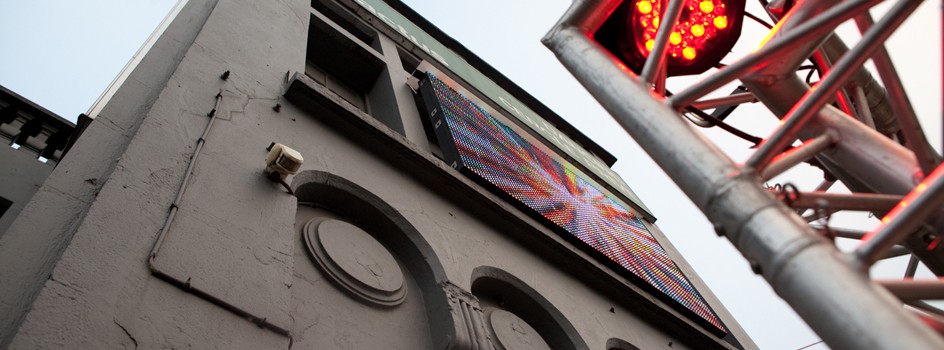No one knows exactly when the building that housed what was to become the Canotier was first constructed. In all likelihood it was at the beginning of last century if we can judge by the style of the façade. Obviously, the name refers to the oarsmen who worked the rowboats during that period, rowing in the ponds that formed along the Woluwe waterway. Originally serving as a ballroom for the bourgeoisie from the upscale neighborhoods of Auderghem, at different times the Canotier was a casino, a theatre hall, cinema, and then a club known as “Les Gémeaux.” It would change its name again before it was razed due to town planning constraints.
In the 70s, the venue put on concerts, but it was towards the end of the decade that the program seemed to choose a defined path. And so the concert posters started to announce artists such as Jonathan Richman, Cherry Vanilla, The Flamin’ Groovies and The Stinky Toys (Elli Medeiros and Jacno’s first group) who were at the top of their musical career. Belgian groups also played there, however with more limited exposure. The punk group Hubble Bubble, with whom Plastic Bertrand got his start, is known for playing there several times.
There were times where the Canotier was happy to host different avant-garde performances, such as Wayne County (which was later renamed Jayne County) who stopped by there. The first transsexual rock singer, she sprung from a The concert remained stuck in the minds of those who attended and was a factor for The B-52’s first break into popularity in Belgium
glam rock background with her group The Electric Chairs. Starting out at Max’s Kansas City and moving on later to the London underground scene, she embodied “the blank generation” of the mid-70s, a pivotal period ushering in the rise of punk.
The history of the Canotier has unbreakable ties to two then-unknown groups that would go on to fame after each played an outstanding show: The B-52’s and Simple Minds.
The B-52’s played there in July of ’79 just as their eponymous first album, wonderfully produced by Chris Blackwell in his studio in Nassau, had come out. With great dance appeal and darker undertones, the first track “Planet Claire,” was the second single to come off the record. The singer Fred Schneider used a walkie-talkie on the track— a gimmick that seemed to be a comic, knee-jerk response to the amply used vocoder in disco music—while the guitarist Ricky Wilson played fire-alarm riffs to give the song a distressed sound. The song remains one of the leading contributions to the new wave and proved to be the single that helped the band go big. The concert remained stuck in the minds of those who attended and was a factor for The B-52’s first break into popularity in Belgium.
During the same year in mid-October, Simple Minds took over the stage. By that point the band had only one album “Life in a Day,” but they’d just completed their second “Real to Real Cacophony.” It was a historic moment, being their first concert in Belgium (they returned the following year to Forest National as the opening act for Peter Gabriel.) Nicolas Blanmont, who had not yet become a classical music journalist, was among at least one hundred others in the audience. He was stunned by the early days of the Scottish band. A few photos of the concert show the musicians, guys standing stiffly with their instruments, packed tight onto too narrow of a stage, bothered by the overbearing spotlights. Jim Kerr toyed with the first of his stage gestures, but he didn’t yet possess the charisma that he would acquire some years later after the band’s hit “New Gold Dream.” He still hadn’t planted his feet on a stadium stage and flashed his impeccable concert presence. It’s clear that, even back then, Simple Minds was a group stamped with adolescent innocence.
It’s not known exactly when in the 80s that the Canotier gave way to the Cactus. One thing is certain: from that point on, the venue became a commercially oriented club that drew in more of a nightlife crowd than those who came for the music, and it forever lost the charm that it gained over the previous decades when it opened its doors to concerts of all kinds. Those garish lights drove away the ethereal sonic images that once splashed over its walls.
Eric Therer
